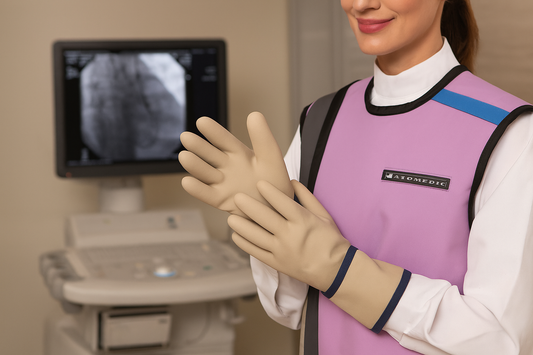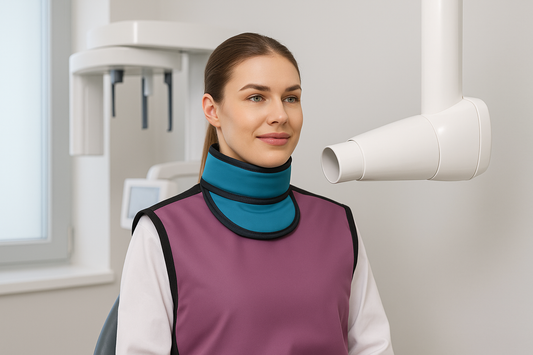Radiation exposure risks extend beyond the torso and thyroid. The head—particularly the brain, skull, and eyes—is also vulnerable to scatter. Long-term exposure can increase risks of cataracts, neurological issues, and other occupational hazards.
Head shields provide a critical, often overlooked layer of protection for professionals in high-exposure environments.
Why Protect the Head?
Research has highlighted the dangers of cumulative scatter to the eyes and brain. Professionals in interventional radiology, cath labs, and surgical settings face exposure daily. Shielding the head helps prevent long-term effects while allowing freedom of movement.
Key Features of Head Shields
-
Comprehensive Coverage: Protects the skull and sensitive tissues.
-
Durability: Traditional lead remains the gold standard for effectiveness.
-
Comfort: Adjustable designs ensure shields are wearable during long shifts.
Frequently Asked Questions
Do all radiology staff need head shields?
They are most beneficial for professionals who spend significant time in high-exposure settings.
Are they heavy?
Modern shields balance protection with ergonomics.
Do they protect the eyes?
When combined with leaded eyewear, they provide full coverage.
Helping Professionals Choose Wisely
Head shields are vital for those who want complete protection. By safeguarding the head, professionals reduce long-term occupational risks.
For reliable safety, the CavoMed Everest Traditional Lead Head Shield provides trusted coverage and durability.




